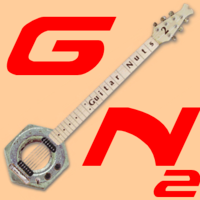Guys you've been kind enough to walk me through some electronics that I couldn't get my head around in the past, but I've reached a point where I really need to understand more.
My problem is I think of electronics like plumbing and I think that is what is messing up my thinking.
The high end question is why doesn't a tone control only affect half of the signal?
So here's my thought experiment... A single pickup connected directly to a jack. The signal forms a circuit and we'll hear sound through the amplifier.
Now let's split the output to a second jack B. Just to be clear, all we did was splice the input and output wires into two wires so we now have 50% signal at jack A and B.
So far I think everything works the way I'm expecting it to.
But now let's put a volume control in the circuit for jack A. If we turn it down, does only jack A output go down or does Jack B output go down as well?
Either way, please explain why?
Assume now that we put a tone control on the Jack b side of the circuit. Does it only affect the jack be output or does it affect the A output as well?
Same why as before.
As you've probably already guessed, My thought experiment is clearly separating tone and volume which which both go to ground. So they are parallel, but that is also true of the normal single jack version that we're used to.
So it seems in my mind that the tone control should only be controlling half of the signal tone.
I'm pretty sure my fallacy has to do with the outputs described above.. I think you guys are going to tell me that when Jack a volume goes down it also turns down Jack b volume.. same for tone and that would explain why a regular circuit isn't half and half.
But the why completely confuses me... If this was plumbing, the two outputs could be affected on their own.
I hope this makes sense and also hoping I might learn something from it :-)
My problem is I think of electronics like plumbing and I think that is what is messing up my thinking.
The high end question is why doesn't a tone control only affect half of the signal?
So here's my thought experiment... A single pickup connected directly to a jack. The signal forms a circuit and we'll hear sound through the amplifier.
Now let's split the output to a second jack B. Just to be clear, all we did was splice the input and output wires into two wires so we now have 50% signal at jack A and B.
So far I think everything works the way I'm expecting it to.
But now let's put a volume control in the circuit for jack A. If we turn it down, does only jack A output go down or does Jack B output go down as well?
Either way, please explain why?
Assume now that we put a tone control on the Jack b side of the circuit. Does it only affect the jack be output or does it affect the A output as well?
Same why as before.
As you've probably already guessed, My thought experiment is clearly separating tone and volume which which both go to ground. So they are parallel, but that is also true of the normal single jack version that we're used to.
So it seems in my mind that the tone control should only be controlling half of the signal tone.
I'm pretty sure my fallacy has to do with the outputs described above.. I think you guys are going to tell me that when Jack a volume goes down it also turns down Jack b volume.. same for tone and that would explain why a regular circuit isn't half and half.
But the why completely confuses me... If this was plumbing, the two outputs could be affected on their own.
I hope this makes sense and also hoping I might learn something from it :-)




Comment